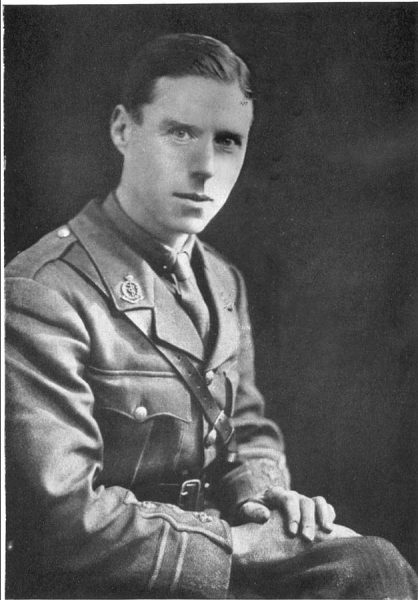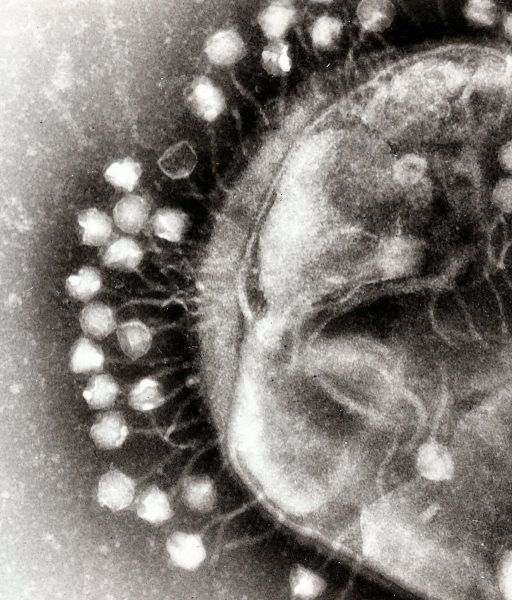
Frederick William Twort (1877-1950)
On March 20, 1955, English bacteriologist Frederick William Twort passed away. Twort was the original discoverer in 1915 of bacteriophages, i.e. viruses that infect bacteria. He researched into Johne’s disease, a chronic intestinal infection of cattle, and also discovered that vitamin K is needed by growing leprosy bacteria.
Early Years
Frederick William Twort was born in Camberley, Surrey, the eldest of the eleven children of Dr. William Henry Twort. He initially only received a limited education, but managed to go to London in order to study medicine at the local St Thomas’s Hospital when he was only 16. After his graduation, Twort decided to follow the path to laboratory research and started his position as assistant to Dr. Louis Jenner, back then in the position of Superintendent of the Clinical Laboratory of St Thomas’ Hospital. He already began to work on bacteria and in 1901, Twort moved to London Hospital to work for the well known Professor William Bulloch. Under Bulloch, Twort managed to become a capable experimental bacteriologist and began to publish his first scientific papers in 1905. At the pathology research centre, the Brown Animal Sanatory Institution Twort became superintendent in 1909.
Research on Mycobacteriaceae
When working at the Brown, Twort began focusing on bacteria like Mycobacteriaceae. Back then, Leprosy also known as Hansen’s disease was still one of the major concerns in medicine, however, scientists were not able to culture the leprosy bacillus in the laboratory yet.Frederick William Twort then suspected that leprosy bacillus had a relationship with the tubercle bacillus, a species that was culturable. He proceeded to incorporate dead tubercle bacilli in the growth medium and succeeded in culturing leprosy. Around 1936, it became clear that the ‘essential substance’ supplied by the tubercle bacillus that was missing from the medium turned out to be vitamin K.

An electron micrograph of bacteriophages attached to a bacterial cell. These viruses are the size and shape of coliphage T1
Growing Vaccines in Vitro
Twort and his brother, Dr. C. C. Twort had been trying to grow viruses in artificial media for several years. They hoped to find nonpathogenic virus, which might be the wild type of a pathogenic one, so more likely to grow. They completed the initial work on the discovery of bacterial viruses around 1913. In 1914, Twort attempted to identify the ‘essential substance’ that allows a vaccinia virus to grow in vitro. He plated smallpox vaccines on nutrient agar slants and obtained large bacterial colonies of several colours. Upon examination, Twort found minute glassy areas that would not grow when subcultured. He realized that these areas were the result of the destruction of the bacterial cells and was able to pick from some of these areas and transmit this from one staphylococci colony to another. In further experiments, Twort was able to show that the agent could pass through porcelain filters and it required bacteria for growth. Frederick William Twort published his findings in The Lancet in 1915. While Twort’s achievements were largely ignored at the time, Félix d’Herelle discovered phages independently. His work was presented to the French Academy of Science in 1917 and despite d’Herelle’s immediate thoughts on how phage might be used to treat patients with dysentery, this was not used as a treatment during World War I.[4]
Later Years
Financial support for his research dwindled in the late 1930s, and Twort’s laboratory was destroyed by a bomb in 1944. The University of London took this opportunity to deprive Twort of his post and research facilities. He was allowed to store the research equipment at his home in Camberley. In 1949, Penguin Books published his chapter on the Discovery of the Bacteriophage alongside a chapter on the Bacteriophage by Felix d’Herelle in the popular series Science News. Frederick WIlliam Twort died on 30 March 1950.
Graham Hatfull (University of Pittsburgh/HHMI) Part 1: Bacteriophages: What are they?, [8]
References and Further Reading:
- [1] Frederick William Twort: Not just Bacteriophage
- [2] Who discovered bacteriophage?
- [3] Frederick William Twort Biographical Memoir at the Royal Society
- [4] Félix d’Herelle and the Bacteriophages, SciHi Blog, April 25, 2017.
- [5] Frederick William Twort at Wikidata
- [6] Twort, F. (1925). “The Transmissible Bacterial Lysin and Its Action on Dead Bacteria”. The Lancet. 206 (5326): 642–644. doi:10.1016/S0140-6736(00)90041-2
- [7] Duckworth, D. H. (1976). “Who discovered bacteriophage?”. Bacteriological Reviews. 40 (4): 793–802.
- [8] Graham Hatfull (University of Pittsburgh/HHMI) Part 1: Bacteriophages: What are they?, iBiology @ youtube
- [9] F. W. Twort: An Investigation on the Nature of Ultra-Microscopic Viruses. In: The Lancet. 4. Dezember 1915, doi:10.1016/S0140-6736(01)20383-3.
- [10] Timeline for Microbacteriologists, via DBpedia and Wikidata